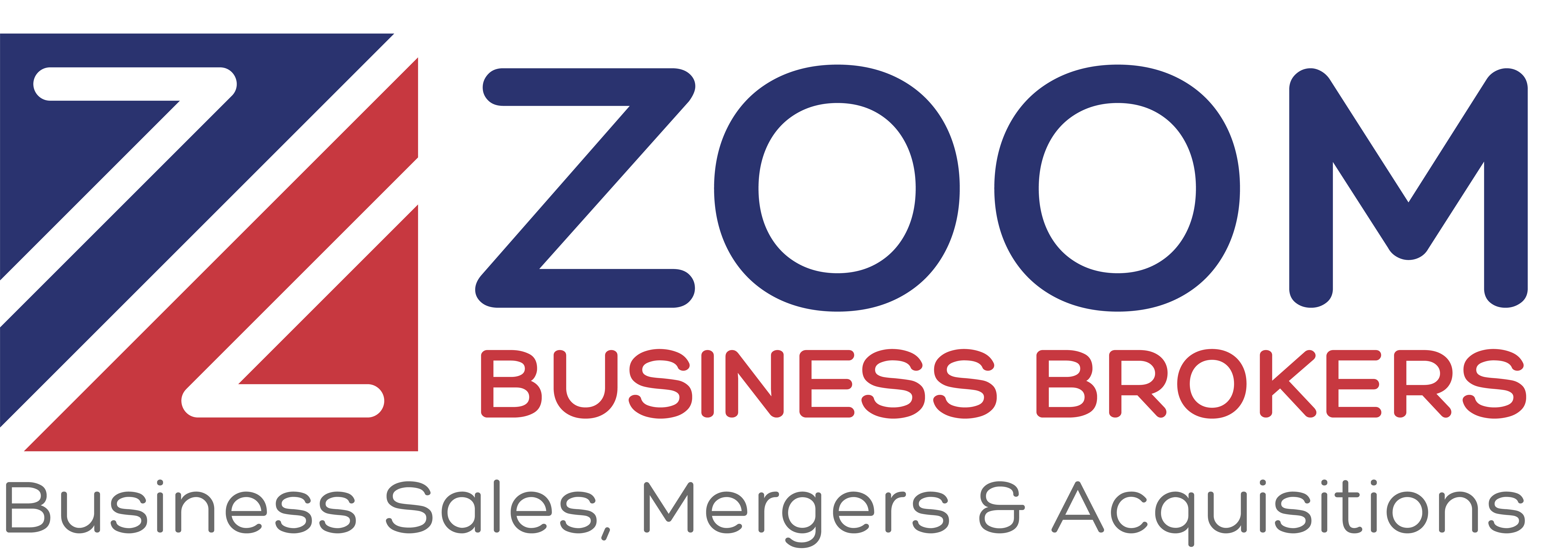
How Does Your Business Compare?

The value of a business is not strictly about its financial performance or the price someone is willing to pay for it. Numerous intangible factors, or value drivers, influence its worth. The evaluation of these drivers provides insight into the business’s potential for future growth and profitability, which are key considerations for potential buyers. This article aims to delve into some of these key value drivers, using a table to better illustrate their significance in the process of selling a business.
- Business Type: The demand for your business type significantly impacts its valuation. Businesses in high-demand sectors naturally command higher selling prices due to their appeal to a larger pool of potential buyers. Conversely, those in sectors with little demand may face challenges in attracting buyers, ultimately leading to a lower selling price. To improve this, consider diversifying or pivoting your offerings to align with high-demand sectors.
- Business Growth: High and steady business growth is a strong value driver. It signifies the company’s ability to grow its revenue and profitability over time. Steady growth is appealing to buyers as it suggests a high potential for future profitability. Conversely, low or inconsistent growth can devalue a business. To enhance growth, focus on effective business strategies, like market expansion and product innovation.
- Market Share: Businesses with a large and growing market share are seen as leaders in their sectors, making them attractive to buyers. Small or static market shares can limit a company’s attractiveness. To improve market share, consider investing in marketing and sales strategies that broaden your customer base and increase your competitive edge.
- Profits: Good, steady profits are one of the most straightforward indicators of a business’s health. They signal a successful business model and strong future potential. On the other hand, unsteady profits suggest instability and risk, decreasing the business’s appeal to buyers. Enhancing profitability may involve cost reductions, price adjustments, or efforts to boost sales.
- Management: An above-average management team adds value to a business by showcasing effective leadership and the potential for sustained growth. Understaffed or mediocre teams may devalue the business due to perceived inefficiencies or instability. Enhancing this value driver might mean investing in employee development, hiring key personnel, or improving management processes.
- Financials: Audited financials demonstrate a company’s commitment to transparency and accuracy, thus increasing buyer trust. Compiled or reviewed financials, although useful, may not inspire the same level of confidence. To improve this aspect, consider obtaining regular audits and maintaining meticulous financial records.
- Customer Base: A wide and growing customer base signifies market acceptance and the potential for stable future revenue. A fluctuating or narrow customer base may suggest instability or a limited market, decreasing business value. To grow your customer base, prioritize customer satisfaction, quality service, and effective marketing strategies.
- Litigation: A business with no litigation history in recent years is typically seen as less risky, adding to its value. On the contrary, regular litigation can decrease a business’s appeal due to potential legal costs and reputation damage. To maintain a clean litigation record, comply with legal requirements and manage disputes effectively.
- Sales: Good sales growth signifies a strong market presence and potential for future profits. No growth or low growth can decrease a business’s value. To enhance sales growth, invest in effective sales strategies and customer engagement.
- Industry Trend: Businesses operating in industries experiencing growth tend to attract higher valuations due to their future potential. If your industry is experiencing stagnant growth, this may negatively impact your business’s value. Staying on top of industry trends and adapting your business model to suit can help drive up your business’s value.
In conclusion, several factors or value drivers influence the selling price of a business. By understanding these drivers and strategically enhancing them, business owners can optimize their exit strategy and potentially maximize their selling price.

How Does Your Business Compare?
The art of selling a business extends beyond just financial figures; it incorporates various value drivers, key attributes or factors that can increase a business’s value and appeal to prospective buyers. Understanding these drivers, evaluating how your business measures up, and actively working to enhance your performance in these areas can significantly influence your business’s value and saleability.
- Business Type: The demand level for your business type is crucial. High demand equates to more potential buyers and a higher perceived value. Conversely, little demand can diminish your business’s attractiveness. If your business operates in a low-demand sector, consider diversifying your products or services to align with market trends and demands.
- Business Growth: A business demonstrating high and steady growth signals potential for further expansion, making it attractive to buyers seeking future profitability. Businesses with low growth can be seen as stagnant or riskier investments. Bolstering business growth can involve strategic initiatives, such as market expansion, diversification, and innovation.
- Market Share: Large and growing market share can indicate a strong competitive position, adding to your business’s appeal. Conversely, a small or stagnant market share may imply fierce competition or lack of differentiation. To increase market share, companies can focus on developing unique selling propositions, effective marketing strategies, and robust customer relationships.
- Profits: Profitability is an immediate attraction for buyers. Businesses with good, steady profits indicate a successful operational model and predictability, an aspect many buyers value. Unsteady profits can signify business instability. To stabilize and increase profits, businesses should analyze their revenue streams, cost structures, and pricing strategies for improvement opportunities.
- Management: An above-average, well-staffed management team can enhance a business’s value, suggesting effective leadership and operational efficiency. Understaffed management can give the impression of instability or poor organizational health. To improve this value driver, businesses may need to hire key personnel, develop existing staff, or optimize their organizational structure.
- Financials: Audited financials are a strong value driver, as they imply accuracy, transparency, and good governance. Conversely, merely compiled financials might raise doubts about the business’s financial practices. To improve this driver, businesses can invest in regular audits and uphold meticulous financial record-keeping.
- Customer Base: A wide, steadily growing customer base is a positive indicator of market acceptance and future revenue potential. In contrast, a non-steady customer base may hint at customer churn or market instability. To improve this driver, businesses should prioritize customer satisfaction and retention strategies, alongside efforts to attract new customers.
- Litigation: Businesses with no recent litigation history are seen as less risky, enhancing their appeal. Frequent litigation, on the other hand, could signal potential legal issues and associated costs, diminishing the business’s value. Keeping a clean litigation record involves adhering to all relevant laws, maintaining strong supplier relationships, and managing disputes effectively.
- Sales: Demonstrating good sales growth can reflect positively on a business’s market presence and revenue potential. Businesses with no or little sales growth may be seen as lacking momentum. To increase sales, companies can focus on enhancing their sales strategies, refining their product or service offerings, and improving customer relationships.
- Industry Trend: Operating in an industry experiencing good growth can increase a business’s attractiveness, as it suggests potential for future expansion and profitability. Businesses in industries with merely okay growth may be seen as less attractive. To ride on positive industry trends, businesses need to stay abreast of market developments and adapt their strategies accordingly.
In sum, the value drivers outlined above contribute significantly to a business’s overall appeal and potential sale price. As part of your exit strategy, recognizing and optimizing these drivers can make your business more desirable to prospective buyers, potentially leading to a higher sale price and a more successful business transition. Always remember to not just compare your business to others in general, but consider your direct competition and industry-specific standards. This nuanced understanding will better prepare you for the process of selling your business.
Read More
The Confidentiality Agreement
When considering selling their companies, many owners become paranoid regarding the issue of confidentiality. They don’t want anyone to know the company is for sale, but at the same time, they want the highest price possible in the shortest period of time. This means, of course, that the company must be presented to quite a few prospects to accomplish this. A business cannot be sold in a vacuum.
The following are some of the questions that a seller should expect a confidentiality agreement to cover:
- What type of information can and can not be disclosed?
- Are the negotiations open or secret?
- What is the time frame for which the agreement is binding? The seller should seek a permanently binding agreement.
- What is the patent right protection in the event the buyer, for example, learns about inventions when checking out the operation?
- Which state’s laws will apply to the agreement if the other party is based in a different state? Where will disputes be heard?
- What recourse do you have if the agreement is breached?
Obviously, executing an agreement does not mean a violation can’t occur, but it does mean that all the parties understand the severity of a breach and the importance, in this case, of confidentiality.
While no one can guarantee confidentiality, professional intermediaries are experienced in dealing with this issue. They are in a position to understand the extreme importance of confidentiality in business transactions as well as the devastating results of a breach in confidentiality. A professional intermediary will require all legitimate prospects to execute a confidentiality agreement.
A confidentiality agreement is a legally binding contract, enforceable in a court of law. It establishes “common ground” between the seller, who wants the agreement to be extensive, and the buyer, who wants as few restrictions as possible. It allows the seller to share confidential information with a prospective buyer or a business broker for evaluative purposes only. This means that the buyer or broker promises not to share the information with third parties. If a confidentiality agreement is broken, the injured party can claim a breach of contract and seek damages.
© Copyright 2015 Business Brokerage Press, Inc.
Photo Credit: pippalou via morgueFile
Read More
Common Reasons for Selling
It has been said that the sale of a business is usually event driven. Very few owners of businesses, whether small or large, wake up one morning and think, “Today I am going to sell my company.” It is usually a decision made after considerable thought and usually also prompted by some event. Here are a few common “events” that may prompt the decision to sell:
Boredom or “Burn-out” – Many business owners, especially those who started their companies and have spent years building and running them, find that the “batteries are starting to run low.”
Divorce or Illness – Both divorce and illness can cause a rapid change in one’s life. Either of these events, or a similar personal tragedy, can prompt a business owner to decide that selling is the best course of action.
Outside Investors – Outside investors may include family, friends, or just plain outside investors. These outside investors may be putting pressure on the owner/majority owner in order to recoup their investment.
No Heir Apparent – In this scenario, no family member has any interest in the business; and the owner has not groomed his or her successor. Unfortunately, in this event the owner often continues to run the business until he is almost forced to sell.
Competition is Around the Corner – In this scenario, the owner would have been better off selling prior to competition becoming an issue.
A “Surprise” Offer is Received – This may be about the only reason not truly event driven; an unsolicited offer is presented that is too good to pass up.
Everything is Tied Up in the Company – The owner/ founder sometimes becomes aware that everything he or she has is tied up in the business. In other words, all the eggs are in one basket.
Should Have Sold Sooner – Owning a small to midsize company (or even a large one) is not without its risks. A large customer goes under, suppliers decide to increase their prices, trends change, business conditions change, etc.
Surveys indicate that many small company owners do not have an exit strategy; so, when an event does strike, they are not prepared. Developing an exit strategy doesn’t mean the owner has to use it. What it does mean is that a strategy is ready when the owner needs it.
A professional intermediary can supply a business owner the real world information necessary not only to develop a plan, but also to know how to implement the plan when it becomes necessary.
© Copyright 2015 Business Brokerage Press, Inc.
Photo Credit: luanarodriquez via morgueFile
Read More
Deciphering Business Valuations: Navigating the Challenges

Valuing a business is an intricate process steeped in complexity. Often subject to the judgment of the assessor, it assumes that the provided information is accurate, posing unique challenges. This article explores the key challenges inherent in business valuations and offers insights into handling these hurdles effectively.
1. Navigating the Dilemma of Product Diversity
Firms offering a single product or service can often be more vulnerable than their multiproduct counterparts. The inherent risk is the potential change in market preference or disruptive elements affecting the product’s viability. Hence, companies are encouraged to explore product diversity to distribute risk and ensure a robust valuation.
2. Mitigating the Risks of Customer Concentration
Many small businesses rely heavily on a handful of major clients or customers. The loss of a key client can significantly impact the firm’s revenue and profitability, thereby affecting its valuation. Businesses can manage this risk by broadening their customer base, ensuring a stable flow of revenue, and improving their business valuation.
3. Unraveling the Value of Intangible Assets
Intangible assets like patents, trademarks, and copyrights often form a crucial part of a business’s value. However, the challenge lies in quantifying these assets accurately, given their intangible nature. Regardless, these assets can add significant value to a business, making it attractive to potential buyers, enhancing its overall valuation.
4. Contending with the Reliance on Critical Supply Sources
A company depending solely on a single supplier may secure a competitive edge due to cost-efficiency. However, this advantage could become a liability if the supplier’s situation changes, especially for international suppliers, where the risk of supply chain disruption is higher. To circumvent this risk, businesses should diversify their supply sources, ensuring operational continuity and a more robust business valuation.
5. Understanding the Implications of ESOP Ownership
Companies partially or fully owned by employees (ESOPs) can face unique valuation challenges. As ESOP-owned firms require an employee vote for significant decisions such as company sale, this can affect marketability and consequently, valuation. Therefore, it’s crucial for ESOP businesses to factor in this aspect and effectively communicate with their employee-owners when planning a sale.
6. Accounting for the Company/Industry Life Cycle
A business’s life cycle and industry trends significantly impact its valuation. Companies operating in declining industries may find their valuations adversely affected. Businesses should remain adaptive and innovative, ensuring they are not left behind in industry shifts and maintaining their value appeal.
7. Dealing with Additional Value Impactors
Several other factors can influence business valuation. These include outdated or unsalable inventory, reliance on short-term contracts, work-in-progress, and the need for third-party or franchise approvals for company sale. Recognizing and managing these factors can prevent unwelcome surprises during the valuation process.
In conclusion, business valuation is a multifaceted process, shaped by a multitude of factors beyond mere financials. By understanding these challenging elements and effectively managing them, businesses can secure an accurate valuation, paving the way for a successful sale. Understanding these issues isn’t just good practice—it’s an essential part of maximizing your business’s value and ensuring its ongoing success.
Read More